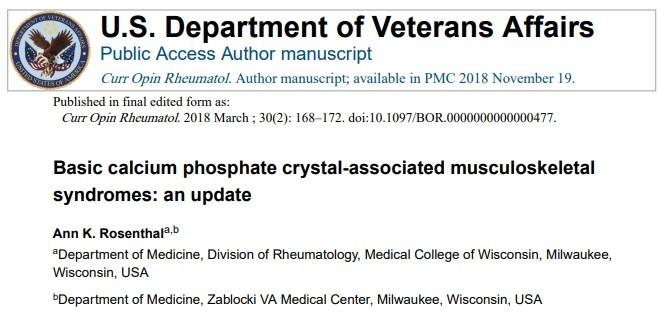This is speculative, but I want to make a note of it.
I'm researching IP-6 (also called phytate, phytic acid, or Inositol hexaphosphate). I’m interested in it for a number of reasons, including its benefits for Parkinson’s disease (which I have) and as an anti-cancer therapy.
What about osteoarthritis?
There is some indication that it may reduce pathological calcifications in some instances. Given that I have problems with bone spurs in my foot, this seems significant to me.
Check out this article:
Rosenthal, Ann K. "Basic calcium phosphate crystal-associated musculoskeletal syndromes: an update." Current opinion in rheumatology 30.2 (2018): 168.
ncbi.nlm.nih.gov/pmc/articl...
“Basic calcium phosphate (BCP) crystals are associated with two important musculoskeletal syndromes. Deposition of BCP crystals in tendons, bursae, and other soft tissues around joints causes calcific periarthritis, whereas intra-articular BCP crystals contribute to osteoarthritis and cause the highly destructive arthritis known as Milwaukee Shoulder Syndrome. The epidemiology and natural history of these syndromes are poorly understood, and because the pathogenesis remains unclear, few targeted therapies are available.”
[...]
“There are few effective treatment strategies for BCP crystal-associated arthritis and dietary risk factors are not well defined. Joubert et al. recently proposed that phytate (myo-inositol hexaphosphate) might contribute to pathologic vascular calcification in renal disease patients. Phytate is a polyphosphate found in nuts, whole grains, and seeds and is a natural inhibitor of calcification in a class with matrix Gla protein, PPi, and fetuin. Patients with renal disease are often on low phytate diets and levels are further reduced by dialysis. Phytate supplementation has been shown to decelerate vascular calcification in aging rats. Low levels may correlate with valvular calcification in elderly humans. Sufficient levels would be difficult to achieve with diet alone, but intravenous forms of phytate are in early drug development stages. This interesting work postulates a potential role for dietary factors in pathologic BCP crystal formation and further studies may reveal a therapeutic potential for phytate in BCP crystal-associated musculoskeletal syndromes.”
Anyway, this looks little bit interesting, but maybe dietary phytate wouldn’t be enough to make a difference? I also don’t know how significant BCP is in contributing to osteoarthritis. But my interest is piqued.
Any comments? Any other dietary suggestions for reducing bone spurs?
